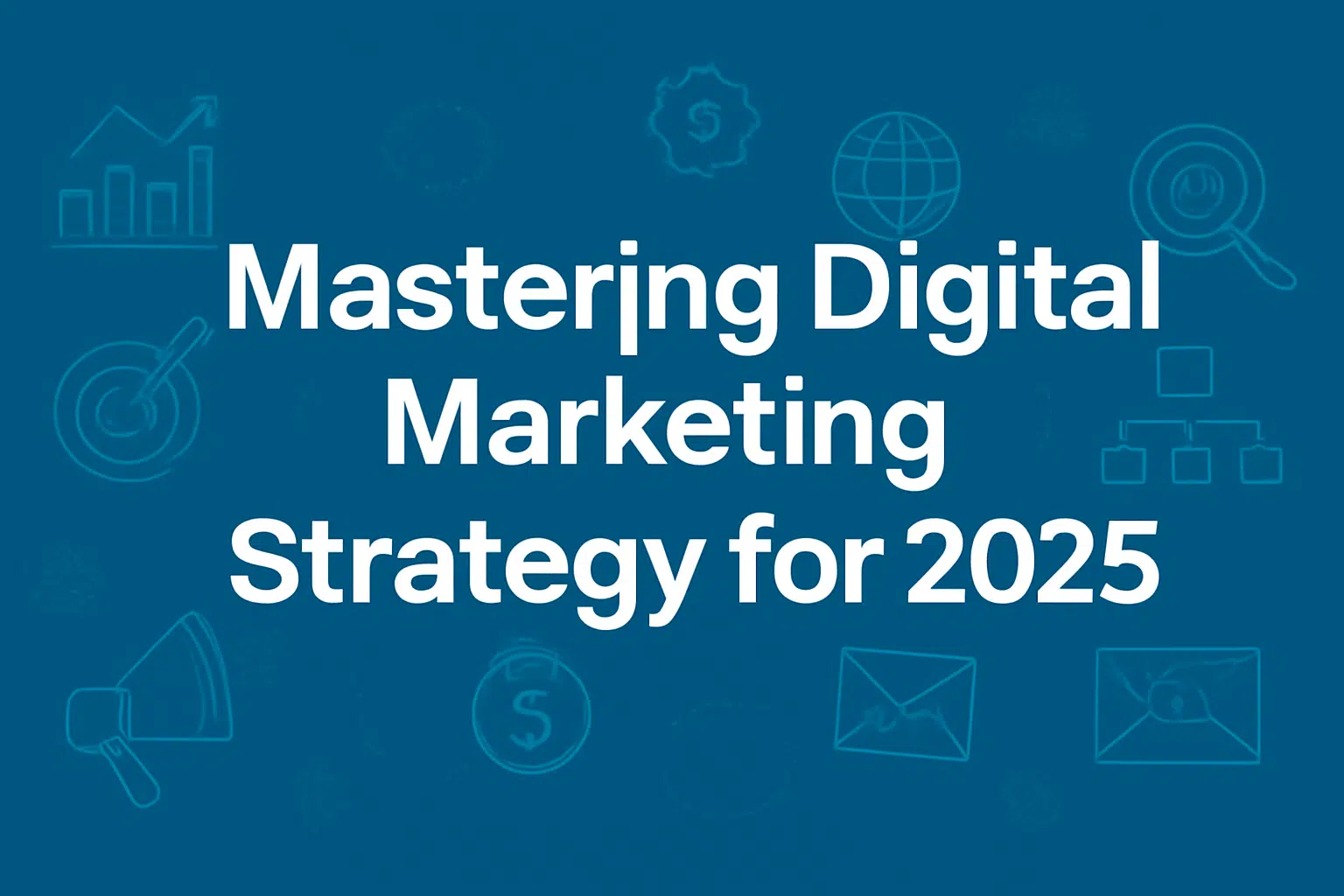
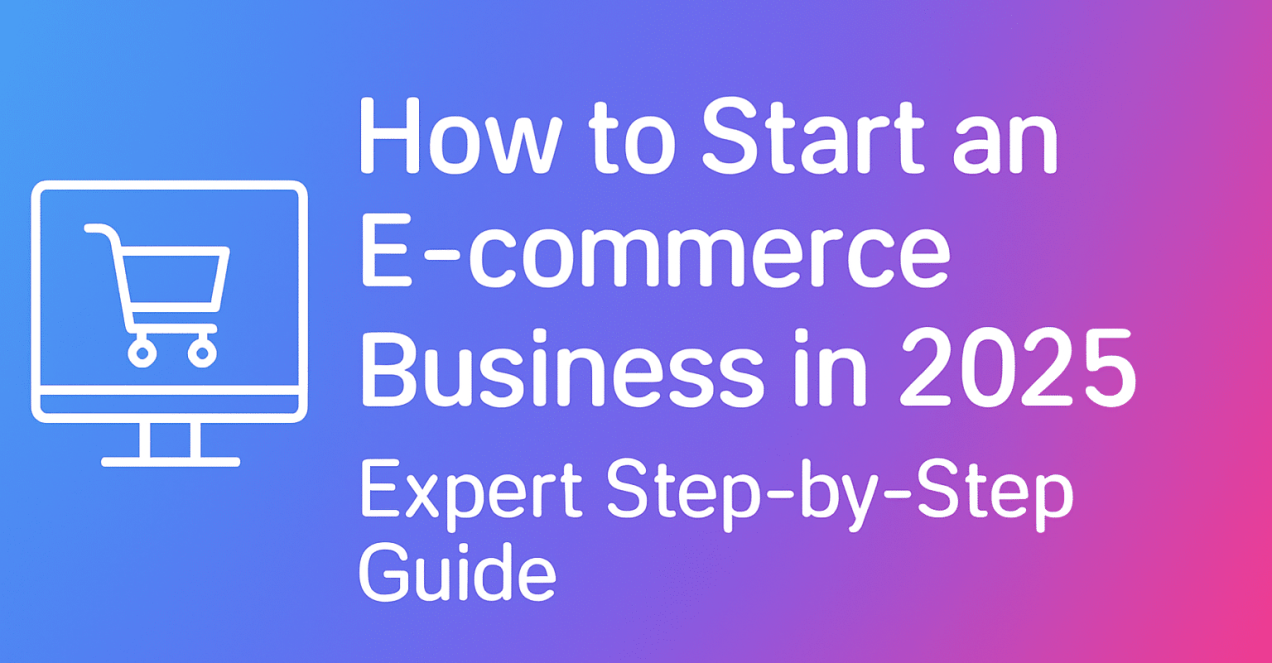
Are you dreaming of starting your own business, gaining financial independence, and tapping into the booming online market, but feel overwhelmed and unsure where to even begin?
The world of e-commerce is expanding at an incredible rate in 2025. From online stores to digital products, the opportunities are limitless. But with so many moving parts—technology, trends, marketing strategies—it’s easy to feel lost in the sea of information and unsure where to start. You want to take advantage of the growing market, but knowing which steps to take can feel daunting.
Without a clear roadmap, it’s easy to make costly mistakes, miss out on lucrative opportunities, or feel paralyzed by uncertainty. The e-commerce landscape in 2025 is driven by new technologies and shifting consumer behaviors, making it more competitive than ever. But here’s the good news: with the right guidance, anyone can navigate this complex space and launch a successful online business. The key is knowing exactly what steps to take and when to take them.
This guide is designed specifically for aspiring entrepreneurs like you. Whether you’re just starting or looking to refine your existing business, this step-by-step guide will provide you with all the insights and strategies you need to succeed. From finding your niche and setting up your store to mastering digital marketing and operations, we’ll walk you through it all, with actionable steps and updated advice for 2025. By the end of this guide, you’ll have the tools, strategies, and confidence to build and grow a future-proof e-commerce business.
What This Guide Covers:
Who This Guide is For:
Introduction to E-commerce in 2025
What is E-commerce?
E-commerce refers to the buying and selling of goods and services over the internet. It’s a broad industry that encompasses online stores, marketplaces, and various digital platforms that facilitate transactions.
E-commerce models have evolved over time and now include:
Why Start an E-commerce Business in 2025?
E-commerce is more than just a trend; it’s a continuously growing industry. The potential for entrepreneurs to tap into the global market has never been more accessible.
Lower Overhead Costs: You can start with minimal investment in infrastructure, avoiding the expenses of physical stores.
Global Reach: With the right tools, your business can reach customers around the world.
Scalability: E-commerce allows you to scale quickly with the right marketing strategies and operational systems.
Accessibility for New Entrepreneurs: Platforms like Shopify, WooCommerce, and Etsy have made it easier for anyone to start an online business. Even without technical expertise, anyone can set up an online store and start selling.
Key E-commerce Trends Shaping 2025
Opportunities and Challenges in the 2025 Landscape
In the rapidly evolving e-commerce landscape, entrepreneurs face both exciting opportunities and significant challenges. Here’s how you can leverage trends and adapt to challenges for a competitive edge:
Trend |
Impact on E-commerce |
Actionable Step for 2025 |
Personalization at Scale |
Increased conversion rates, improved customer loyalty. | Implement personalized product recommendations and targeted email marketing campaigns to boost engagement. |
Rise of Social Commerce |
Direct sales channels on social platforms become vital. | Optimize product listings for platforms like Instagram and TikTok. Use shoppable posts and social ads to increase sales. |
Sustainability & Ethical Sourcing |
Consumer preference shifts towards eco-friendly brands. | Highlight sustainable practices and ethically sourced products on your website and marketing materials. |
AI Integration |
Streamlined operations, enhanced CX, better marketing. | Explore AI tools for chatbots, data analysis, and personalized content generation to improve customer experience. |
Data Privacy & Regulatory Changes |
Need for transparent data handling, impact on targeting. | Review your privacy policies and implement consent management platforms (CMP) to ensure compliance with data privacy laws. |
Mobile-First Shopping |
Majority of traffic and sales come from mobile devices. | Ensure your website is fully responsive and optimized for mobile to improve the shopping experience. |
Importance of CX |
Key differentiator, drives loyalty and word-of-mouth. | Streamline site navigation, improve the checkout process, and provide proactive customer support to enhance CX. |
Differentiation Opportunity: Leverage 2025 Trends for Competitive Edge
The e-commerce space is becoming increasingly competitive, but there are ample opportunities for differentiation. By focusing on personalized experiences, sustainability, and AI-powered automation, you can position your store to stand out from the competition. Understanding and adapting to the technological advancements and consumer expectations of 2025 will give you a clear edge over competitors who are slow to evolve.
Navigating Increased Competition: As more businesses enter the e-commerce space, standing out through personalization and exceptional customer experience is key. By aligning with the latest trends and continuously innovating, you can maintain a competitive edge.
Adapting to Technological Advancements: Keeping up with emerging technologies like AI, machine learning, and mobile-first design is crucial for success in 2025. These tools help you streamline operations, improve marketing strategies, and enhance the customer experience.
Meeting Evolving Customer Expectations: Consumer behavior is shifting towards sustainability, personalization, and seamless shopping experiences. To stay ahead, focus on providing these elements consistently across your business.
Step 1: Planning Your E-commerce Business
Starting an e-commerce business requires more than just picking a product to sell. The key to success is planning—and it all begins with finding the right niche. Let’s break down the steps to plan your e-commerce business effectively, starting with identifying your niche and target audience, conducting market research, and creating a simple business plan.
Finding Your Niche
Why Specialization is Key in 2025
In 2025, the e-commerce landscape is highly competitive. To stand out, you need to specialize. A niche allows you to focus your efforts on a specific market segment, which is more effective than trying to appeal to everyone. Specialization helps you establish authority, reach the right audience, and differentiate yourself from larger, more generalized competitors.
Expert Tip: Start with a niche you are genuinely interested in or have expertise in. Passion and knowledge about your niche will keep you motivated through the ups and downs of building your business.
Methods for Identifying Profitable Niches
Here are a few strategies for finding a profitable niche for your e-commerce business:
Evaluating Niche Potential
Once you’ve identified a potential niche, evaluate its potential by considering these factors:
Identifying Your Target Audience
Defining Your Ideal Customer
Understanding your target audience is critical to success. Start by defining your ideal customer based on:
Understanding Audience Pain Points and Needs
To sell effectively, you need to address pain points—problems or needs your audience faces. These could be anything from frustration with existing products to a lack of solutions for a specific problem.
Creating Buyer Personas
A buyer persona is a semi-fictional representation of your ideal customer. It helps you understand your audience on a deeper level, making it easier to create marketing strategies, products, and content that resonate with them.
Market Research and Feasibility Study
Analyzing Competitors Within Your Niche
Identify competitors who are already succeeding in your niche. Research their product offerings, pricing strategies, marketing tactics, and customer reviews. This will help you understand how to position your own business.
SWOT Analysis
Conduct a SWOT analysis to assess the strengths, weaknesses, opportunities, and threats within your niche. Here’s a quick guide:
Assessing Market Demand and Trends
Use market research tools like surveys, customer feedback, and Google Trends to understand the demand for your product. Keep an eye on trends and ensure that what you’re offering is not only in demand but will continue to be relevant in the coming years.
Business Plan Basics for E-commerce
Why You Need a Simple Plan
While you don’t need a 50-page document, having a clear business plan is essential to map out your strategy. A simple plan helps you stay focused, secure funding, and avoid mistakes early on.
Key Components:
Setting Goals and KPIs (Key Performance Indicators)
Establish clear goals (e.g., sales targets, website traffic, customer acquisition) and KPIs to track your progress. Regularly assess your business performance to ensure you’re on track to meet your goals.
Niche Idea Brainstorming
Use the following table to brainstorm your niche ideas. Look for ideas that excite you, have market demand, and offer the potential for long-term success. Be sure to validate these ideas with research before moving forward.
Niche Idea |
Target Audience |
Potential Products |
Eco-friendly home goods |
Environmentally conscious millennials and Gen Z | Reusable containers, bamboo utensils, sustainable cleaning supplies |
Pet tech accessories |
Pet owners interested in monitoring and convenience | Smart collars, automatic feeders, pet cameras |
Artisanal coffee kits |
Coffee enthusiasts seeking unique brewing experiences | Specialty beans, pour-over kits, unique mugs, flavored syrups |
Vintage clothing |
Fashion-forward individuals interested in unique style | Curated second-hand clothes, reworked vintage pieces |
Expert Tip: Validate your product idea by conducting surveys, checking for existing competitors, and researching potential profit margins.
Step 2: Choosing Products & Sourcing
Once you’ve established your niche, it’s time to choose the products you’ll sell and decide how you’ll source them. This step is crucial in shaping your brand, managing your budget, and setting the foundation for a successful e-commerce business. Let’s walk through how to identify winning products and explore different sourcing models, along with expert tips for 2025.
Finding Winning Products
Identifying Product Opportunities
Finding the right products involves solving problems, tapping into trends, or catering to passions. Your products should address a need or desire within your niche. Here’s how you can spot product opportunities:
Using Product Research Tools
There are several tools that can help you find profitable products:
Expert Tip: Validate your product idea before committing to inventory. Use pre-orders, crowdfunding platforms, or small test batches to gauge interest and minimize risk.
Understanding Product Sourcing Models
Once you’ve identified your product, you need to decide how to source it. Each model has its own pros and cons, and the right choice depends on your business model, budget, and goals. Here’s an overview of popular sourcing methods for 2025:
Sourcing Model |
Pros |
Cons |
Best For |
Dropshipping |
Low startup cost, no inventory management, wide product variety | Lower profit margins, limited control over quality/shipping, high competition | Beginners, testing multiple niches, low initial investment |
Wholesale |
Higher profit margins than dropshipping, established products | Requires upfront inventory investment, need for storage | Businesses with some capital, selling proven products |
Manufacturing |
Full control over product design/quality, unique products | High complexity, significant upfront investment, long lead times | Businesses needing custom products, established brands |
Private Label |
Branding control, ability to build a unique brand, higher margins | Requires finding reliable manufacturers, quality control challenges | Brands wanting to create their own branded versions of existing products |
Print-on-Demand |
No inventory, low risk, easy setup, wide product variety | Lower profit margins, limited product types, less control over quality | Artists, designers, testing apparel/merch ideas, low initial investment |
Handmade/DIY |
Unique products, strong brand story, passionate customer base | Time-consuming, limited scalability, production capacity limits | Working with Suppliers |
Once you’ve chosen your sourcing model, the next step is to find reliable suppliers. Your supplier is critical to your business’s success, as they control product quality, shipping times, and overall fulfillment.
Finding Reliable Suppliers
Evaluating Supplier Quality and Reliability
When assessing potential suppliers, consider the following:
Negotiating Terms and Building Relationships
When negotiating with suppliers, always:
Conclusion
Choosing the right products and sourcing models is a pivotal step in launching your e-commerce business. By identifying product opportunities that solve problems or align with trends, and choosing the right sourcing method, you’re laying the foundation for a successful business. Remember to validate your ideas before investing heavily in inventory and always work with reliable suppliers to ensure quality and efficient operations.
Next Step: Once you’ve selected your products and suppliers, you’re ready to move on to building your online store. Stay focused on your niche, and always adapt to changes in the market to stay ahead of the competition.
Step 3: Selecting the Right E-commerce Platform
Choosing the right e-commerce platform is one of the most important decisions you’ll make when starting your online business. With so many options available in 2025, it’s crucial to consider your business needs, budget, and long-term goals. Here’s a breakdown of the key factors to help you choose the best platform for your store.
Factors to Consider in 2025
Comparing Popular E-commerce Platforms
Here’s a quick comparison of some of the most popular e-commerce platforms in 2025. Each platform has its strengths and weaknesses, so consider your business needs and the features that matter most to you.
Platform |
Pricing (Est. Monthly) |
Key Features |
Pros |
Cons |
Best For |
Shopify (Product Recommendation) |
$29 – $299+ | All-in-one platform, app store, themes, POS, marketing tools | Very user-friendly, scalable, large app ecosystem, excellent support | Transaction fees (unless using Shopify Payments), can get expensive with apps | c |
BigCommerce (Product Recommendation) |
$29 – $299+ | Robust built-in features, no transaction fees, scalability | Powerful features out-of-the-box, good for larger catalogs, SEO-friendly | Interface can be slightly less intuitive than Shopify, fewer free themes | Growing businesses, those needing advanced features without many apps |
WooCommerce |
Free plugin (hosting costs vary) | Highly customizable, open-source, large extension library, SEO-friendly | Flexible, cost-effective (initially), full control over data/site | Requires technical knowledge (WordPress), need to manage hosting/security, reliance on plugins | WordPress users, businesses needing full customization and control |
Etsy |
Listing fees + % sale fee | Niche marketplace for handmade/vintage/craft supplies, built-in audience | Easy to start, built-in traffic, community focus | Limited customization, fees can add up, less control over branding/CX | Artisans, crafters, vintage sellers, those selling unique goods |
Squarespace |
$18 – $40+ | Beautiful templates, integrated e-commerce features, easy design | Excellent design templates, user-friendly editor, all-in-one | Less e-commerce specific features than dedicated platforms, fewer integrations | Creatives, individuals, businesses prioritizing design and simplicity |
Platform Insights:
Expert Tip: Validate Your Platform Choice : Before committing to a platform, test out the features that matter most to you. Many platforms offer free trials, so use this time to ensure the platform meets your needs. Check for mobile optimization, integrations, and customer support to see if it aligns with your long-term vision.
Step 4: Building Your E-commerce Website
Your website is the face of your online business. It’s where potential customers will form their first impressions, browse your products, and make purchases. A well-designed, user-friendly site is crucial for building trust and driving sales. Let’s break down the key steps for building a successful e-commerce website in 2025.
Choosing Your Domain Name
Tips for Selecting a Memorable and Brandable Name
Your domain name is your online address, and it’s essential that it reflects your brand identity. Here’s how to pick the perfect name:
Expert Tip: Choose a name that’s easy to pronounce and spell. Your customers should be able to type it in without confusion or error.
Designing Your Online Store
Selecting a Theme or Template
Choose a theme or template that aligns with your brand and the type of products you’re selling. Many e-commerce platforms (like Shopify, BigCommerce, and WooCommerce) offer customizable themes that cater to various business types. Ensure the theme is clean, professional, and mobile-optimized for the best user experience.
Branding Elements
Creating a User-Friendly Navigation Structure
Make sure your website is easy to navigate, allowing customers to quickly find what they need. Organize products into logical categories, include a search bar, and use filter and sort options for better product discovery.
Expert Tip: Prioritize the mobile experience. In 2025, most shopping will happen on mobile devices. Ensure that your website is fully optimized for mobile, with fast load times, easy navigation, and a seamless checkout process.
Setting Up Key Pages
Adding Products to Your Store
Setting Up Payment Gateways
Choosing Secure Payment Methods
To ensure a smooth checkout experience for your customers, choose secure payment methods. Common options include:
Ensuring PCI Compliance
Ensure that your payment gateway is PCI compliant, which protects your customers’ credit card information. Most established payment providers, like PayPal and Stripe, are already PCI compliant, but it’s important to double-check.
Configuring Shipping Settings
Setting Up Shipping Zones and Rates
Determine where you’ll ship and set up shipping zones (e.g., domestic, international). Choose whether you’ll offer flat rate shipping, calculated rates based on weight or destination, or free shipping for orders over a certain amount.
Offering Different Shipping Options
Consider offering multiple shipping options to cater to different customer needs, including:
Website Element Importance and Tips for 2025
| Website Element | Importance | Tips for 2025 |
Homepage |
First impression, guides visitors, sets brand tone | Highlight unique value proposition, showcase popular products, use high-quality visuals, optimize for speed. |
Product Pages |
Crucial for conversions, provides product details | Use high-quality images/videos, detailed descriptions (features, benefits), clear pricing, prominent Add-to-Cart button, social proof (reviews). |
Mobile Responsiveness |
Essential for user experience and SEO | Ensure seamless navigation, fast loading times, easy checkout on smartphones and tablets. |
Site Speed |
Impacts user experience and SEO | Compress images, leverage browser caching, choose a fast hosting provider. |
Clear Navigation |
Helps users find products easily | Logical categories, search bar, filter/sort options, prominent menu. |
High-Quality Visuals |
Showcase products effectively, build trust | Use professional photos/videos, show products in use, maintain consistent style. |
Secure Checkout |
Builds trust, reduces abandoned carts | Display trust badges, offer multiple payment options, minimize steps, provide guest checkout. |
Step 5: Marketing Your Online Store
Marketing is the bridge that connects your e-commerce store with your potential customers. Building a strong marketing strategy will not only help you attract visitors but also convert them into loyal buyers. Let’s walk through the essential marketing channels, tips, and strategies for 2025 to ensure your business stands out in a competitive market.
Developing Your Marketing Strategy
Essential E-commerce Marketing Channels
Key Strategy: Optimizing your website for search engines ensures your store shows up when potential customers search for products like yours.
Expert Tip: Understand basic SEO to help customers find your store organically. Start with the basics like optimizing product pages and blog content.
Key Strategy: Content is king when it comes to building authority and trust.
Key Strategy: Social media is where you can create a community and visually showcase your products.
Expert Tip: Leverage social media but choose platforms where your target audience is most active. For example, younger audiences engage more on TikTok than Facebook, so prioritize accordingly.
Key Strategy: Building and nurturing your email list is essential for retention and repeat purchases.
Expert Tip: Focus on building your email list from day one. Using tools like Mailchimp or Klaviyo can help automate this process and increase customer engagement.
Key Strategy: Running paid ads can drive immediate traffic and sales.
Key Strategy: Collaborating with influencers can help you reach a new audience and build trust quickly.
Expert Tip: Focus on micro/nano influencers who have a more engaged, niche following. Performance-based partnerships (e.g., commission on sales) can also be effective.
Integrating Marketing Efforts for Maximum Impact
To maximize the impact of your marketing strategies, ensure your efforts are integrated.
Marketing Channel Overview for 2025
Marketing Channel |
Key Strategy for E-commerce |
2025 Focus |
SEO |
Optimize product/category pages, build relevant backlinks, improve site speed/mobile-friendliness. | Adapting to AI-driven search, focusing on user intent and experience, optimizing for visual search. |
Content Marketing |
Create blog posts, guides, videos related to products/niche, build authority. | Leveraging video (especially short-form), interactive content, focusing on solving customer problems, demonstrating expertise. |
Social Media |
Engage with audience, showcase products visually, run targeted ads. | Utilizing shoppable features, building community, leveraging platform-specific trends (e.g., TikTok/Reels), focusing on authentic content. |
Email Marketing |
Build list, send targeted promotions, abandoned cart reminders, newsletters. | Hyper-personalization, automation based on behavior, focusing on retention and customer lifetime value (CLV). |
Paid Advertising |
Run product ads, retargeting campaigns, use platform-specific ad formats. | Navigating privacy changes (less reliance on third-party cookies), optimizing for mobile conversions, testing new ad platforms/formats. |
Influencer Marketing |
Collaborate with relevant influencers to reach new audiences and build trust. | Focusing on micro/nano influencers, performance-based partnerships, ensuring transparency and authenticity. |
Step 6: Handling Logistics & Operations
Efficient logistics and operations are the backbone of any successful e-commerce business. From processing orders to managing inventory and delivering exceptional customer service, every aspect of your operations impacts your customer satisfaction and bottom line. Let’s break down the key components of handling logistics and operations in 2025, with practical tips to ensure smooth and efficient processes.
Order Fulfillment Process
Shipping Strategies
Inventory Management
Customer Service Best Practices
Expert Tip: Don’t neglect customer service; it’s crucial for retention and reputation. Respond quickly to inquiries and resolve issues promptly to turn first-time buyers into loyal customers.
Using Operational Tools Effectively
Efficient operations are key to maintaining smooth day-to-day activities. Here’s how to make the most of operational tools:
Operational Area |
Key Considerations |
Tips for Efficiency |
Order Fulfillment |
Speed, accuracy, cost, packaging presentation | Automate order processing where possible, use efficient packing stations, optimize warehouse layout (if applicable). |
Shipping |
Cost calculation, carrier reliability, speed options, tracking communication | Offer tiered shipping options, negotiate rates with carriers, provide clear tracking information, consider shipping software. |
Inventory Management |
Tracking stock levels, reorder points, preventing stockouts/overselling | Use inventory management software, conduct regular audits, implement forecasting based on sales data. |
Customer Service |
Responsiveness, problem-solving skills, handling returns/refunds, building rapport | Implement a CRM or helpdesk system, create canned responses for common queries, train staff, clearly state return policy. |
Returns Management |
Clear policy, ease of process for customer, efficient processing of returns | Make policy easily accessible, provide prepaid return labels, process refunds/exchanges quickly upon receipt. |
Step 7: Legal & Financial Considerations
When starting an e-commerce business, it’s crucial to understand the legal and financial requirements that come with it. From choosing a business structure to staying compliant with privacy laws, handling these aspects correctly will set you up for long-term success. This section will guide you through the legal and financial steps you need to take to launch your business in 2025.
Business Registration & Legal Structure
Expert Tip: Stay updated on e-commerce regulations and privacy laws such as GDPR (General Data Protection Regulation) for European customers and CCPA (California Consumer Privacy Act) for California residents to ensure compliance with privacy regulations in 2025.
Legal Documentation
Importance of Clear and Compliant Policies
Having clear, transparent policies is essential for protecting both you and your customers. It ensures that your business runs smoothly, and customers know exactly what to expect. Non-compliance can lead to legal issues and customer dissatisfaction.
Taxes for E-commerce
Expert Tip: Consult a tax professional to ensure you’re in compliance with local sales tax laws and income tax regulations. Using accounting software can also help keep your financials organized for tax season.
Setting Up Business Finances
Protecting Your Business
Using Legal/Financial Tools Effectively
Leverage tools like LegalZoom (for business registration and legal documents) and QuickBooks (for accounting) to simplify your legal and financial processes. These tools ensure that you stay compliant with laws and regulations, reducing the risk of costly errors.
Key Requirements and Tasks Overview
Area |
Key Requirement/Task |
Notes |
Business Registration |
Choose legal structure (e.g., LLC), register business name, obtain EIN (if applicable). | Consult with legal professionals or use services like LegalZoom. Requirements vary by location. |
Legal Policies |
Draft Terms & Conditions, Privacy Policy, Return Policy. | Ensure policies are easily accessible on your website and comply with relevant laws (e.g., GDPR, CCPA for privacy). |
Taxes |
Understand sales tax obligations (nexus), register for sales tax permits, track income/expenses for income tax. | Sales tax rules are complex and vary by state/country. Consult a tax professional. Use accounting software for tracking. |
Business Bank Account |
Open a separate bank account for business finances. | Essential for separating personal and business finances, simplifies accounting and tax filing. |
Accounting |
Choose accounting method (cash vs. accrual), track all transactions. | Use accounting software (e.g., QuickBooks, Xero) or hire an accountant. Keep detailed records. |
Privacy Compliance |
Understand data privacy laws relevant to your customers’ locations (e.g., GDPR, CCPA). | Implement clear consent mechanisms, ensure data is handled securely, update privacy policy regularly. |
Scaling Your E-commerce Business
As your e-commerce business grows, it’s essential to shift focus from simply managing operations to scaling effectively. Scaling your business involves leveraging data, refining processes, and expanding strategically. Let’s walk through the key elements of scaling your e-commerce business in 2025, from analyzing performance data to automating and outsourcing tasks.
Analyzing Performance Data
Key E-commerce Metrics to Track
To scale effectively, you need to understand how your business is performing. These key metrics will give you insights into areas for improvement:
Using Analytics Tools
To track these metrics and make data-driven decisions, use analytics tools like Google Analytics, Shopify Analytics, or Klaviyo. These tools can provide insights into traffic sources, user behavior, and sales performance, helping you optimize every aspect of your store.
Expert Tip: Analyze your data regularly to understand customer behavior and optimize your store. Regularly reviewing these metrics helps you spot trends, identify pain points, and fine-tune your marketing strategies.
Strategies for Growth
Considering Automation and Outsourcing
Scaling Strategy Breakdown
Scaling Strategy |
Description |
Considerations |
Expand Product Line |
Introduce new products or categories that align with your niche and audience. | Ensure new products fit your brand, source reliably, market effectively to existing and new customers. |
Enter New Markets |
Target customers in different geographic regions or demographics. | Research market demand, understand local regulations/culture, adapt marketing and logistics. |
Conversion Rate Optimization |
Improve website design, user experience, and copy to increase conversion rate. | Use A/B testing, analyze user behavior data, simplify checkout process, optimize product pages. |
Build Customer Loyalty |
Implement loyalty programs, provide excellent customer service, engage community. | Focus on retention over acquisition (often cheaper), build strong relationships, encourage repeat purchases. |
Automation & Outsourcing |
Use technology or third parties to handle tasks like email marketing, ads, fulfillment. | Identify tasks that are repetitive or outside your expertise, calculate costs vs. benefits, choose reliable partners/tools. |
Expert Tip: Monitor your performance regularly—analyze data, test new strategies, and continuously improve your processes to stay competitive in a rapidly evolving market.
Common E-commerce Challenges & Solutions
As you venture into the world of e-commerce, it’s natural to encounter challenges. These hurdles are part of the growth process, but with the right strategies and mindset, they can be overcome. In this section, we’ll address common pain points that new entrepreneurs face and provide actionable solutions that directly link back to the steps outlined in this guide.
Addressing Audience Pain Points Directly
Challenge 1: Don’t Know Where to Start / Confused About Choosing the Right Platform / Unsure How to Find Profitable Products
Solution: Starting an e-commerce business can be overwhelming, but this guide breaks it down into manageable steps. In Step 1, we cover how to find your niche and identify profitable products. In Step 3, we provide a detailed comparison of e-commerce platforms, helping you choose the one that aligns with your needs and budget. With thorough planning and validation (refer to Step 1-3), you’ll feel confident in your foundation.
Challenge 2: Struggling with Effective Online Marketing Strategies / Finding It Hard to Stand Out
Solution: Marketing can be a challenge, especially with so many competitors online. In Step 5, we walk you through effective marketing strategies, including SEO, content marketing, social media, email marketing, and paid advertising. The key to standing out is niche specialization and building a strong brand identity—two areas we emphasize throughout this guide. Define your unique value proposition, and focus on delivering a consistent, high-quality customer experience.
Challenge 3: Worried About Technical Aspects / Uncertain About Managing Logistics / Don’t Understand Customer Service
Solution: The technical side of e-commerce can feel daunting, but don’t worry. In Step 3, we cover how e-commerce platforms simplify the technical aspects, making it easy for you to get your store up and running without a tech background. When it comes to logistics and customer service, Step 6 provides detailed guidance on streamlining operations, handling shipping efficiently, and building an effective customer service strategy that promotes retention.
Challenge 4: Concerned About Legal Requirements and Taxes / Afraid of Making Costly Mistakes
Solution: Legal and financial concerns are common, but in Step 7, we go over the necessary steps for business registration, legal documentation, and understanding taxes. Research, planning, and seeking professional advice are crucial. You can rest assured knowing that by following the detailed steps in this guide, you’ll have a solid legal and financial foundation for your business.
Other Common Challenges
Challenge |
Common Causes |
Actionable Solutions |
Low Website Traffic |
Poor SEO, ineffective marketing, lack of promotion. | Improve SEO (Step 5), diversify marketing channels (social, email, paid ads), create valuable content, engage on social media. |
Abandoned Carts |
Complex checkout, unexpected shipping costs, trust issues, technical glitches. | Simplify the checkout process, be transparent about shipping/taxes early, display trust badges, optimize for mobile, implement abandoned cart email sequences. |
Intense Competition |
Undifferentiated product/brand, poor marketing, uncompetitive pricing. | Find a specific niche, build a strong brand identity, offer unique value (e.g., exceptional customer experience, sustainability), analyze competitor strategies, focus on customer loyalty. |
Difficult Customers/Returns |
Unclear policies, product issues, poor communication. | Have clear return/refund policies (Step 7), provide excellent customer service (Step 6), use high-quality product descriptions/images to set expectations. |
Staying Updated |
Rapid changes in technology, trends, and regulations. | Dedicate time for learning, subscribe to industry newsletters, follow experts, attend webinars, analyze your data regularly. |
Additional Expert Tips for Overcoming Challenges
Conclusion
Challenges are a natural part of building an e-commerce business, but with the right strategies, they’re all manageable. By analyzing your data regularly, optimizing your marketing efforts, automating processes, and continually adapting to new trends, you can turn these challenges into growth opportunities. This guide is here to help you navigate these hurdles and build a business that thrives in 2025. Stay focused, stay adaptable, and remember that every challenge can be overcome with the right approach.
Conclusion & Next Steps
Starting an e-commerce business can be a rewarding and empowering journey, but success comes from a solid plan, strategic decisions, and continuous action. Here’s a quick recap of what we’ve covered and how you can start your business today.
Key Takeaways
Emphasize the Opportunity in 2025
2025 is an exciting year for e-commerce, with new trends and technologies emerging. If you approach your business with the right strategy, focus, and consistency, there’s an immense opportunity for growth and success. The key is staying adaptable and being willing to evolve as the market changes.
Encourage Action
The best time to start is today. Take the first step and begin planning your business. Start with:
Future-Proofing Your Business
While 2025 holds great promise, remember that the e-commerce landscape will continue to evolve. Continuous learning and staying updated on new trends and technologies will keep your business competitive. Whether it’s AI advancements, shifts in consumer behavior, or new privacy laws, being adaptable will help ensure your success beyond 2025.
Unique Angle: Always keep an eye on future-proofing your business by continuously refining your processes, adapting to trends, and using data-driven decisions to guide your growth.
Additional Resources
To help you on your journey, here are some resources:
Interactive E-commerce Business Planner Tool: To keep you on track, use this tool to plan and execute your business strategy from start to finish. It’s a great way to put your ideas into action!
Expert Q&A Section: Have any specific questions? Refer to our Expert Q&A section for additional insights and advice directly from industry professionals.
Key Takeaway Action Items
Key Takeaway |
Action Item |
| Planning is fundamental | Define Your Niche and Target Audience (See Step 1) |
| Product validation is crucial | Research and Validate Your Product Idea (See Step 2) |
| Platform choice impacts everything | Compare and Select Your E-commerce Platform (See Step 3) |
| Marketing requires multi-channel strategy | Develop Your Initial Marketing Plan (See Step 5) |
| Operations and legal compliance are non-negotiable | Outline Your Fulfillment Process and Review Legal Basics (See Steps 6 & 7) |
| Data is key to growth & overcoming challenges | Start Tracking Key Metrics and Analyze Performance (See Scaling & Challenges Sections) |
| E-commerce in 2025 is dynamic but full of opportunity | Stay Updated on Trends and Be Ready to Adapt (See Intro & Challenges Sections); Start Building Your Business Using This Guide as Your Roadmap! |
Final Encouragement
Now it’s time to take action. You’ve learned the steps, identified challenges, and gathered the tools to succeed. The e-commerce world is waiting for you to make your mark—start today, stay committed, and keep evolving to build a thriving business.
Good luck, and here’s to your success in 2025 and beyond!
BASIC PLAN9.5Social Media Marketing Basic Plan
BUY NOW$ 700 / Month STANDARD PLAN9.7Social Media Marketing Standard Plan
BUY NOW$ 1500 / MonthPREMIUM PLAN10Social Media Marketing Premium Plan

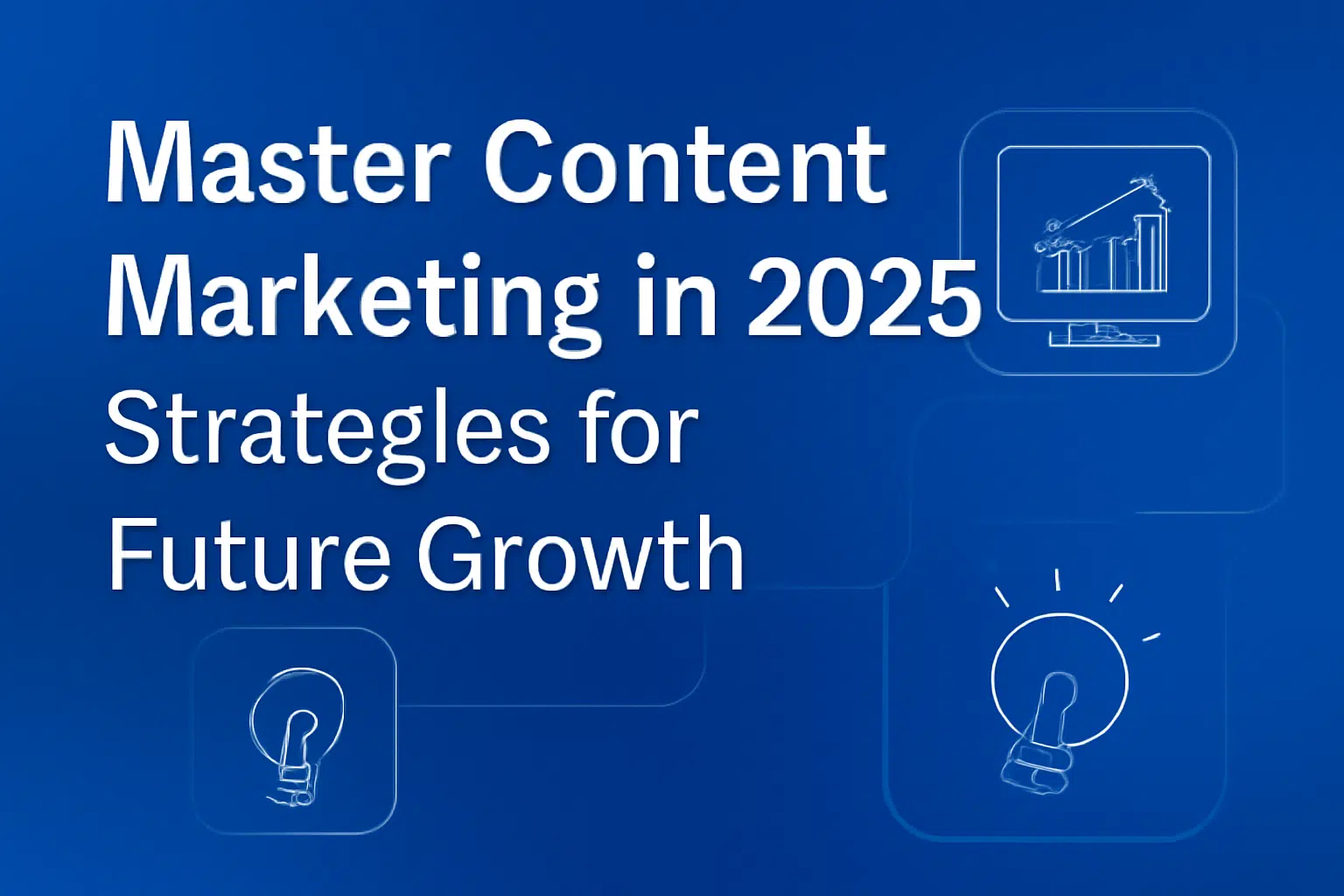

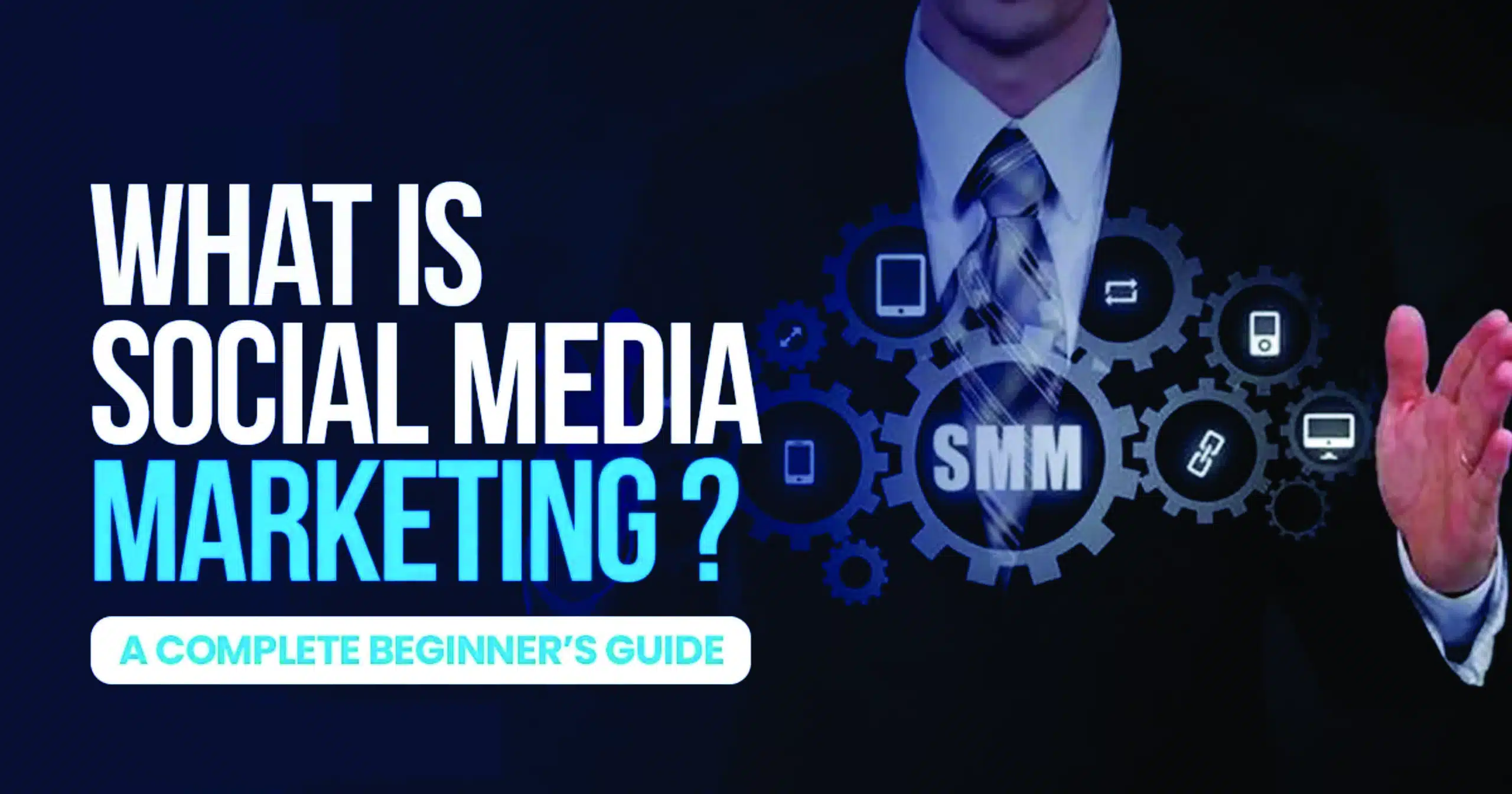
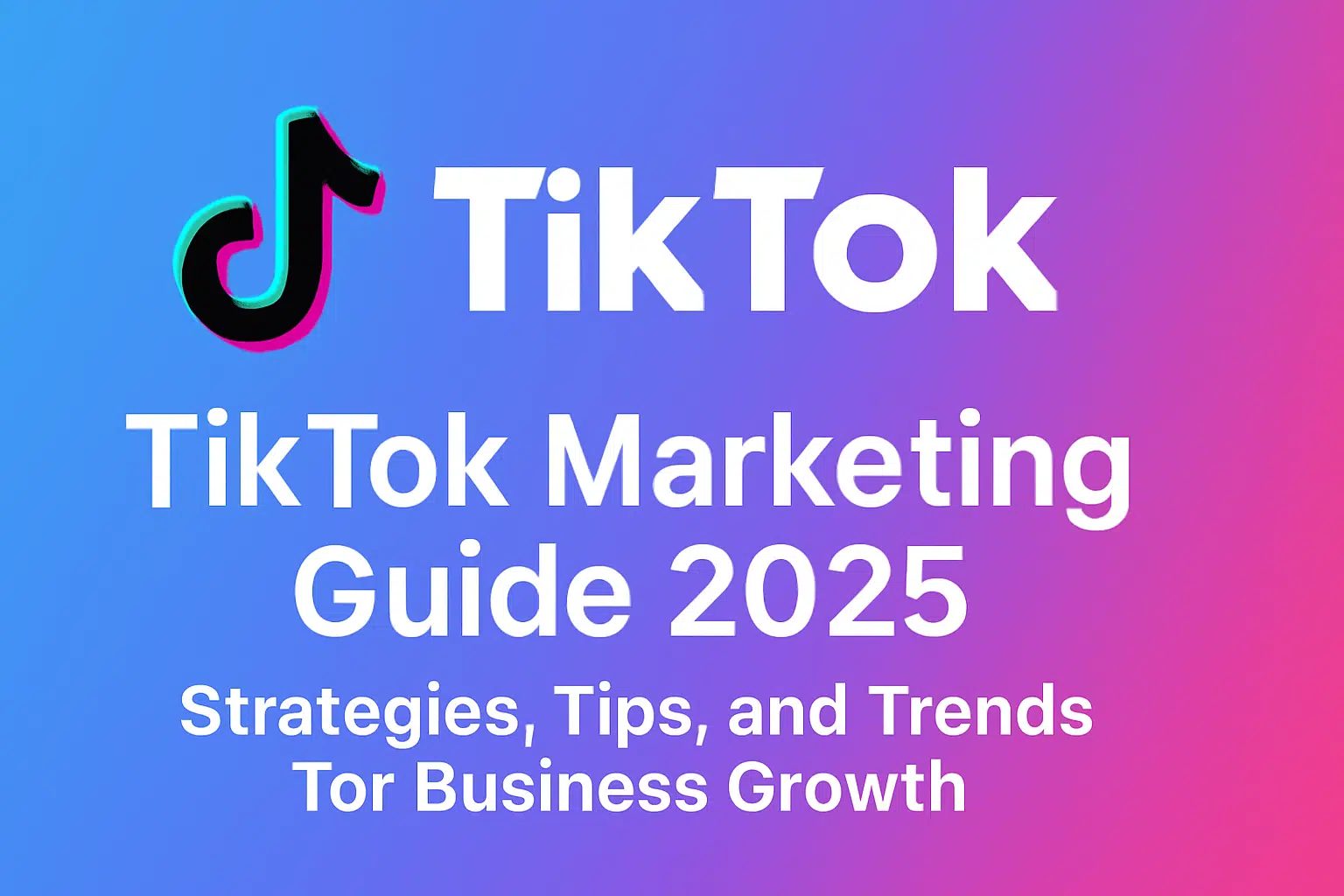
Your Trusted Partner in Digital Growth.
From zero to hero: Your digital complete marketing solution.
Copyright © 2025 World Successes | All rights reserved.
Site❤️Built by World Successes